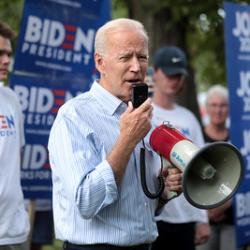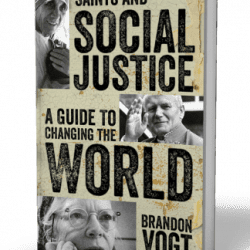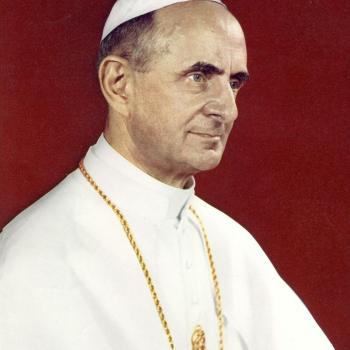Is it possible to move toward whole-places and local economies that are resilient, sustainable, and human-scaled, and which combine widely distributed property ownership with an overarching concern for the common good? These aims, which are informed by and cohere with Catholic Social Teaching (CST), are the goals of a new theoretical paradigm for placemaking and economic development that my business partner and I term Econogenesis ─ literally, the creation of an economic environment.
Econogenesis is still an intellectual medley of particular ideas and approaches, including the “economic gardening” model pioneered in Littleton, CO; the “enterprise facilitation” of Ernesto Sirolli (Ripples on the Zambezi); Muhammad Yunus’s ideas on microfinance and microcredit; elements of Distributism, the “third way” economic system; a whole lot of Jane Jacobs and the New Urbanism movement; the “small is beautiful” work of E. F. Schumacher; and Peter Senge’s ideas on “the learning organization.” There are dashes of Richard Florida, Fritjof Capra, Richard David Hames and Donella Meadows in the mix, too! And, of course, the CST principles of solidarity, subsidiarity, the dignity of the human person, the centrality of the family, and the primacy of the common good provide the background for the entire effort.
Although Econogenesis is still nascent, we believe it already contradicts conventional thinking about economic development, which views natural resources as the basis for economic growth. Once identified, natural resources are then exploited by the deployment of financial capital, often without regard to impacts on human ecology. In contrast, we consider human persons themselves to be the true engine of economic development because it is people who supply value, both as the producers and users of goods and services. Not surprisingly then, our primary focus is on the development of human capital, and especially the creation of conditions in which human ingenuity can be unlocked and unleashed.
What we hope to avoid at all costs is the kind of automobile-centric, one-dimensional “development” seen so often in the United States, where land is cleared, highways built, and dense pods of housing are erected around a central commercial strip. This kind of flat, featureless “crudscape” – to borrow a term from James Howard Kunstler, the author of The Geography of Nowhere – is antithetical to real placemaking, which has as its object the cultivation of richly creative and concordant human social environments. What we hope to achieve is not just economic activity, and certainly not just “development,” but place … and community.
First, though, it is important to outline some of our foundational principles. Wherever this exciting project takes us, and whatever ideas are crystallized and enacted, these criteria must be met, or at least not contradicted in practice.
Oriented Toward Whole-Place
Most of the problems faced by communities represent interrelated components in broader, more complex systems. These problems cannot be solved in isolation apart from their impacts on the rest of the system; and attempts to craft such isolated solutions often only leads to greater problems elsewhere. A ‘whole-place’ orientation will drive placemakers to solicit the perspectives of all stakeholders, including those whose relationship to a particular community is attenuated by geography or culture. This “borderless” mentality enables communities to zoom out on the wider system, and to gain an appreciation for particular challenges and opportunities as manifestations of wider, systemic perturbations. Such zooming in and out is the very heart of whole-systems thinking.
Resilient
We define resilience as nothing more than the ability to adapt to changing conditions in a flow. The model par excellence for resilience is nature itself, which obeys an immutable process of growth, conservation, release, and reorganization known as the “adaptive cycle.” This process is non-linear and dynamic. It embraces complexity, traps and distributes knowledge, conserves energy, is self-organized and self-healing, and is directed toward outcomes that benefit the whole.
Man-made systems tend to be linear, mechanical, and goal-directed. Pumps, pencils, and power plants are examples of linear systems. We need them and they have value, but such systems are highly vulnerable to shocks, both internal and external. In intensely human environments like businesses and communities, where complexity, not simplicity, is the dominant feature, linear systems tend to break down because they simply cannot survive the rate and magnitude of change. Human environments, like natural ecosystems, are resilient to the extent that they obey the adaptive cycle.
Sustainable
To “sustain” means, among other things, “to support, hold, or bear up from below; bear the weight of, as a structure,” and “to supply with food, drink, and other necessities of life.” A sustainable place develops local strategies for providing water, waste conversion, food, energy, recreation, transportation and other critical community needs. While the notion of complete self-sufficiency directly contradicts a whole-systems view of the world, it is possible to establish a level of local sufficiency that is robust and reliable.
A sustainable place is also self-organizing, which is a characteristic of distributed, decentralized networks. A self-organizing community is one in which members are empowered to learn independently, take the initiative, communicate freely, exchange incentives and resolve conflicts. Such communities share common values, which act as mediums of social exchange and provide a baseline for defining whole outcomes.
Human-Scaled
Human-scaled places are those fitted to the social, emotional, physical and intellectual needs of people, not the other way around. This means built-forms – buildings and streetscapes – that are walkable, livable, and encourage cooperative social activity. It means commercial, government, education, and civic arrangements that are transparent, accessible, and user-friendly. Human-scaled places offer people a sense of dignity and control, which in turns fosters individual initiative, creativity and innovation. They reduce or eliminate the social and psychic isolation that afflicts high-entropy industrial societies. They break down concentrations of power that dwarf the family or the person.
Ultimately, human-scaled means achieving the widest possible social distribution of the ownership of productive property. This includes land, but also homes and family-based cottage industries – including crafts, transportation, retail and light manufacturing – as well as cooperatives, guilds and trade associations, with ownership spread equitably among the men and women who participate. It also means government that is widely distributed and, on the basis of the principle of subsidiarity, privileges the creation of policy and the delivery of services at the lowest possible level.
Person-Focused
While human-scaled places are fitted to the social, emotional, physical and intellectual needs of people in the aggregate, person-focus means erecting systems that empower particular human beings to realize their potential. Practically, person-focus means building “learning communities,” where education of the young is a given, and opportunities for lifelong learning are available. It also means racial, cultural, religious, and ideological pluralism, equal justice under law, and universal access to basic health care. Most of all, person-focus means providing pathways for persons to learn and practice trades, to create successful businesses and build some measure of economic independence for themselves and their families.
Person-focused also demands that places be created with a high degree of inculturation, a fancy word denoting consonance with the embedded culture and ethos of a people. This is especially true in the field of international development, which has sometimes been associated with a kind of cultural imperialism that effectively alienated people from their own traditions, folkways, and beliefs. Person-focused means recognizing that Iraqis or West Africans will simply never be Swiss burghers orVermont farmers, nor should they be! There is more than enough good “stuff” in every indigenous culture for locally attuned development to work, especially if one brings to the task a whole-place orientation.
Organized for the Common Good
Because human beings flourish within the context of community, and community is rooted in place, the concept of the common good is fundamental to both placemaking and community-building. The common good does not mean privileging the group over persons. Nor is it simply the assertion of individual “rights.” And the common good is not reducible to the utilitarian formula, “the greatest good for the greatest number of people.” The common good means engaging and empowering the range of stakeholders to achieve what we call Win³ solutions: Is it good for you? Is it good for me? Is it good for all our neighbors? Viewed this way, the common good is simply whole-systems thinking crystallized.
These principles are the physics of Econogenesis, the boundaries conditions within which we hope a new and exciting approach to development will blossom; and through that approach, whole-places that are resilient, sustainable, human-scaled, person-focused, and organized for the common good of the people who live there and the planet they share.











